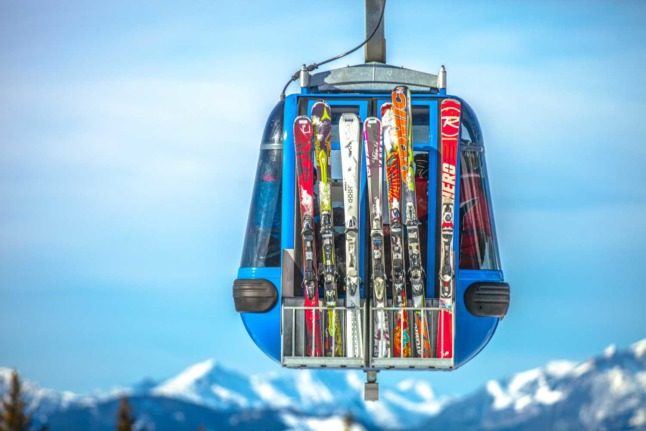It’s no secret that tourism is an important industry in Austria – particularly the winter season.
As a result, winter sports are an important contributor to the Austrian economy and a big employer.
This is mostly due to the geographic nature of Austria – a central European location with mountains and good international accessibility.
Austria has also invested heavily into infrastructure for winter sports, including snow making facilities. This means even during years with limited snowfall, resorts can still operate.
Even during the pandemic winter of 2020/2021, ski lifts still opened in Austria, although border restrictions prevented most tourists from entering the country to go skiing.
But how can people find a job in the winter sports industry in Austria?
Here’s what you need to know.

How big is the winter sports industry in Austria?
In the World Economic Forum’s Travel and Tourism Competitiveness Index 2019, Austria was ranked at number 11 out of 50 countries around the world.
Sport is also a key economic driver in the country and in 2019 it contributed 4.2 percent to GDP in Austria, almost double the EU average of 2.12 percent.
In terms of employment in Austria, sport is even more prominent and accounts for 5.63 percent of GDP (EU average is 2.72 percent).
The result is a thriving sports tourism industry – with winter sports at the centre of it.
READ MORE: How will climate change impact Austria?
To provide a broader perspective, ski resorts in Austria attract more than one million visitors every winter season, and are more popular than resorts in France, Italy, US, Switzerland, Sweden and Andorra.
In the winter of 2018/2019, 73 million overnight stays were recorded in Austria with winter tourists spending on average €184 per day, compared to €160 per day from summer tourists.
Winter sports gear and goods are another prominent sector in Austria.
In the 2018/2019 season, the Austrian Association of Sporting Goods Manufacturers and Suppliers (VSSÖ) reported Austria had a 12 percent market share of the industry, coming second only to the US.
Winter is big business in Austria and, even though the summer season is gaining in popularity, it is still expected to be the dominant season for the coming years.

Where are winter sports jobs located?
Depending on the type of winter sports job, most roles are located in the west of Austria in the Alps.
Resorts like Kitzbühel, Mayrhofen, St. Anton, Ischgl and Zell am See are some of the hotspots for attracting tourists and generating winter season jobs.
Then there are smaller places like Söll and St. Johann in Tyrol, both of which offer the opportunity to live and work in traditional Austrian mountain towns.
Clare Woolner, from Manchester in the UK, first spent a winter season in St. Johann in 2013 as a resort rep and went on to work seven seasons before changing careers in 2020.
Clare, who still lives in St. Johann, told The Local she chose the town because of the outdoor lifestyle, and advises others to think about where they would like to be based before applying for a job.
She said: “Before I started applying for jobs in Austria, I thought about what I wanted to experience from working a winter season.
“I thought about my level of skiing skills, my language ability and my budget in terms of cost of living because some resorts are more expensive than others.
“I would also recommend anyone else looking for a winter season job in Austria to find a position with accommodation included to save on costs.”
READ MORE: How Britons can move to Austria to live and work post-Brexit
Another key location for winter sports jobs is Innsbruck, the capital of Tyrol, which is the base for nine ski resorts.
However, Innsbruck already has a permanent population of around 130,000 people, so for those searching for a typical mountain resort experience, it won’t be found in Innsbruck.
Likewise, Salzburg can be a convenient base for nearby mountains, but it’s not a popular location for winter sports jobs.
For travel into Austria, Tyrol is well connected to neighbouring Bavaria in Germany, and Munich Airport is the closest main international hub.
There are also airports in Innsbruck and Salzburg, with train connections running between the two cities.

What types of jobs are available in the winter sports industry?
For many people searching for a winter sports job, hospitality provides an easy foot in the door.
Every resort has hotels and restaurants and they all need seasonal staff in the form of waiters, waitresses, receptionists, cleaners and housekeepers.
Then there are mountain huts dotted across the Alps that serve food and drink throughout the winter and also need staff.
Other winter sports jobs in Austria include ski instructors, park shapers at snowboard parks, lift operators and resort reps.
Alternatively, there are office-based jobs to consider, such as roles in marketing and advertising.
These positions typically require a certain level of education and professional experience though, and are not always based directly in mountain resorts.
Finally, Austria is a German-speaking country and attracts many tourists from other German-speaking countries.
This means for most customer-facing roles, German-language skills are essential – depending on the location.
For example, places like Mayrhofen in the Zillertal Valley are more popular with English-speaking tourists than towns like Ischgl in the Paznaun Valley.
How to find a job in winter sports?
As with most industries and professions, searching online is usually the first step in finding a job in winter sports in Austria.
There are websites (some in English) dedicated to providing information about working as a snowsports instructor such as skilehrerjobs.at, seasonworkers.com, snowsportsinstructor.com, and snowseasoncentral.com.
Travel companies like TUI advertise latest vacancies on their website, ranging from corporate roles in Vienna to resort-based jobs in St. Johann in Tyrol.
Then there are niche jobs at companies like ski manufacturer Atomic, which is headquarted in Altenmarkt im Pongau in the province of Salzburg. Roles include sales, marketing and production.
Another useful approach is to contact resorts or hotels directly to find out when they are hiring for the winter season and the types of roles that will be available.
Or get in touch with friends that have previously worked in the winter sports industry in Austria and ask for a recommendation.
However, if applying for a German-speaking role, it is always a good idea to translate a CV into German before applying.
FOR MEMBERS: Everything you need to know about preparing your CV in Austria
Coming from overseas?
Moving to a European country to work a winter season is a dream for many people from English-speaking countries like the UK, Australia and New Zealand.
Unfortunately, for UK passport holders, this is now more difficult after Brexit.
For people already living in Austria or elsewhere in the EU (with freedom of movement around the bloc), working a winter season in Austria is still possible though.
For people from countries outside of the EU, a work permit is often required to work in Austria, such as the Red-White-Red Card.
* The Local used statistics from the 2018/2019 winter season as the 2020/2021 season was impacted by the coronavirus pandemic.



 Please whitelist us to continue reading.
Please whitelist us to continue reading.
Member comments